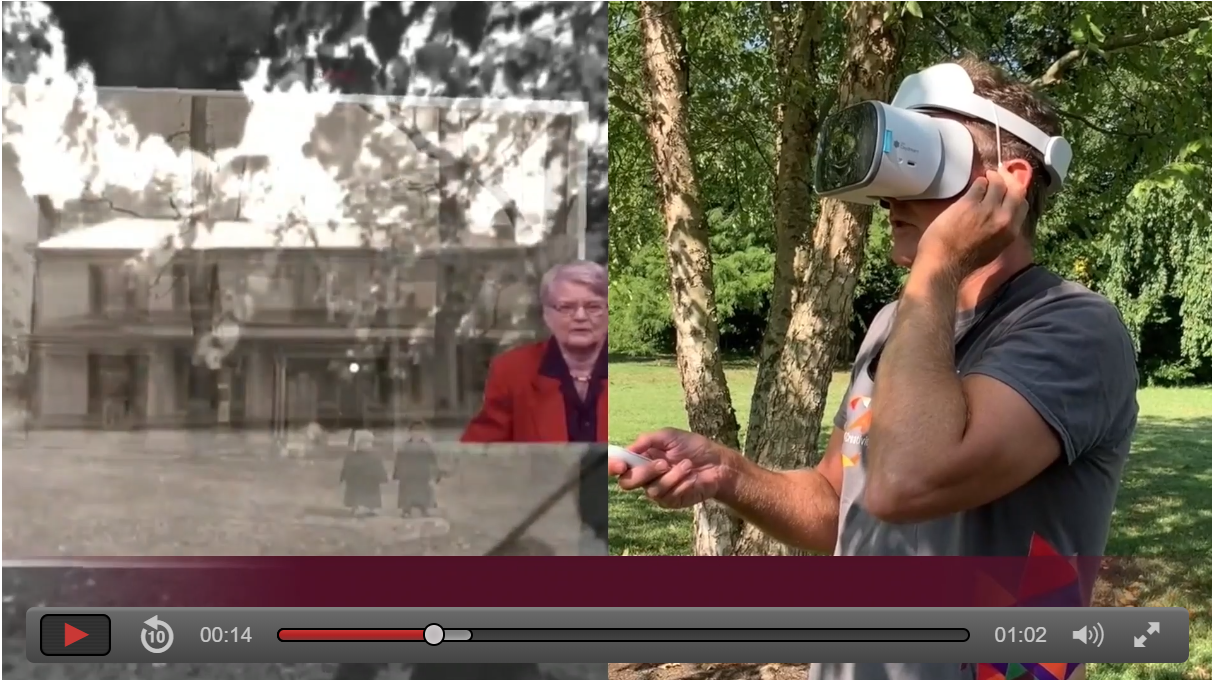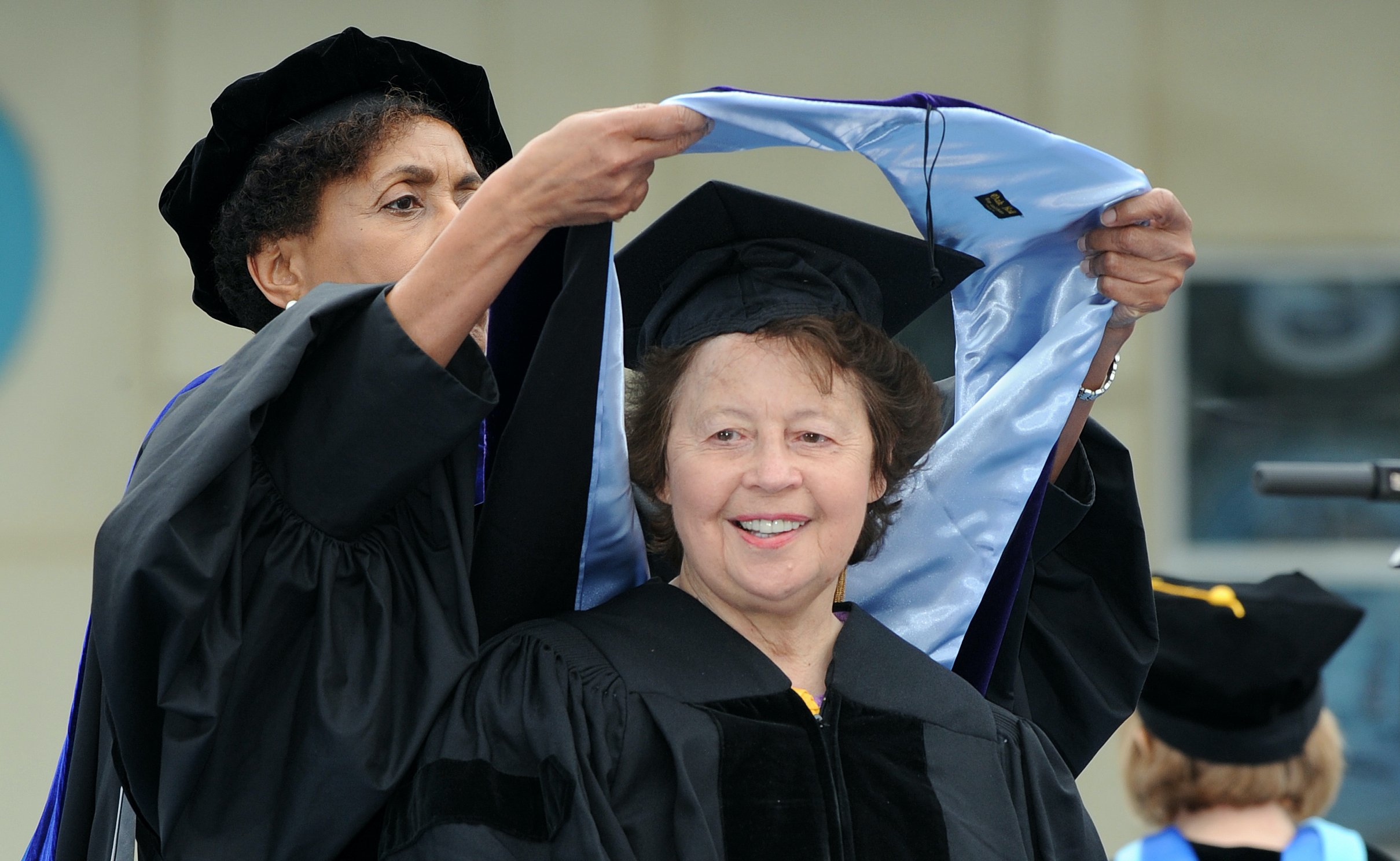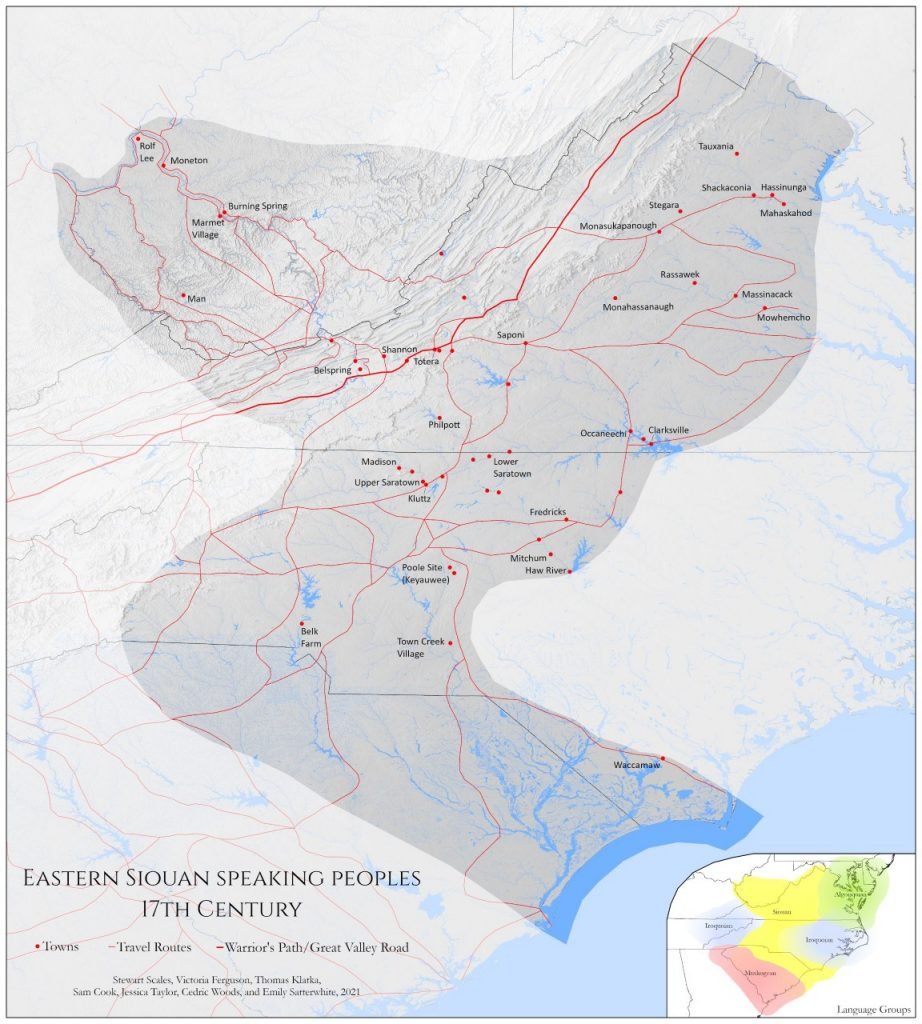Exhibits
Virtual and physical exhibits showcase our students’ coursework and amplify the work of our partners beyond the classroom. Some of examples are below.
To commemorate Virginia Tech’s 150th anniversary in 2022, the VT History Council convened a large team of faculty and community members to create and provide feedback on physical signage, phone-based and extended reality tours, and online exhibits. My roles in this process were varied: I produced content for an Indigenous section of an extended reality tour including historical soundscapes, dialogue between Native language speakers, and oral history interviews; conducted oral history interviews with the descendants of people enslaved on the former plantation upon which Virginia Tech was built; and completed research for and reviewed signage and online tours produced in partnership with students.
The efforts to explain Indigenous histories of Southwest Virginia led to the creation of a collaborative mapping project of Eastern Siouan towns and routes, based on historic accounts and archaeological data. This project is ongoing.
Virginia Tech’s Indigenous student and faculty population is small, and spread across campus; members of Native communities often don’t encounter one another or stories of other Indigenous people on campus. Created with high school students and their families in mind, Native@VT tells the history of Indigenous people at Virginia Tech in their own words, highlighting the stories and success of alumni and faculty. This project was created with VT graduate students, Newman Library tech extraordinaire Scott Fralin, American Indian and Indigenous Community Center director Dr. Melissa Faircloth, and American Indian and Indigenous Studies director Sam Cook.
In the ASPECT graduate course on “The Politics of Memory,” co-taught with political science professors Audrey Reeves and Desiree Poets, students interviewed scholars, Monacan Indian Nation elders, and archaeological experts, completed on-site research, selected images, and wrote the text for an exhibit called “The Land Speaks,” which tells the story of Monacan attempts to stop development at the remains of its historical capitol and sacred cultural site. Forced to go online with COVID-19, it reached more audiences soon became one of the most popular exhibits hosted by Virginia Tech Libraries.
“Voices of Virginia” contains dozens of short oral histories from Virginian eyewitnesses to key moments in American history, from the end of the Civil War to the present. The excerpts are downloadable, accessible by smartphone, and accompanied by transcripts, brief introductions to each narrator, historical context, and helpful classroom tools like discussion questions, activities, and lesson plans that fit into both the Virginia high school standards of learning and college U.S. History curricula. This initiative mined oral history collections created across five decades and housed in over twenty archives, from enormous institutions like Duke University to local historical societies and nonprofits. I worked with open education resource specialists from the University Libraries at Virginia Tech to construct Creative Commons license agreements, and with archivists at donor institutions to select interviews and clips from different collections, time periods, and regions of Virginia. We paired these clips with edited historical context from other open resources, like Encyclopedia Virginia and American Yawp, an open source US History textbook. Finally, graduate students in the VT School of Education and the Department of History worked with groupings of the clips and created lesson plans and discussion questions. Their work aligns with Virginia’s high school English and History standards of learning, and is designed to be useful in college classrooms as well. Since its publication, our work has been added to the Virginia Department of Education open education database, has been featured in the OER Digest, and has won the Oral History Association’s Multimedia Award. Oral history has always been a way to document diverse stories, and this project makes them more accessible to the students who deserve to connect in new ways to the places where they live. Happily, theater students also picked it up and used excerpts in a Voices of Virginia-inspired theater production in 2021.
Lastly, I played a small part in an exhibit at the American Civil War Museum - Appomattox called Enacting Freedom, detailing the life of post-emancipation Black life in rural Virginia. I researched and secured the loan of artifacts for the exhibit, selected and cut oral histories and designed a kiosk interface for their display with archivist Jeff Flanagan, guided my public history class through the creation of infographics for the exhibit using census data, and provided supplementary feedback and primary source research for exhibit content.





